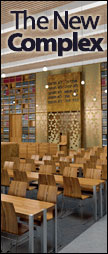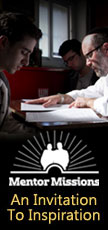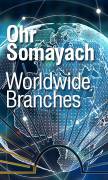Kriat Shema Al Hamitah (Part 14)
Bamidbar & Shavuot
Kriat Shema al Hamitah continues: “Lay us down to sleep in peace, Hashem, our
Our Tefillah appears in Kriat Shema al Hamitah mainly because of the first verse, “Lay us down to sleep in peace, Hashem, our
The Midrash (Tehillim 86), in explaining the phrase, “Spread over us the shelter of Your peace,” writes that when we go to sleep we are not protected by the Mitzvah of Tzitzit because there is no Torah obligation to wear Tzitzit at night. Consequently, we ask Hashem to “spread over us” His protection instead.
This is why the general theme of our Tefillah is bitachon, trust in Hashem. It is not always easy to remember that Hashem watches over us at all times. But, however difficult it is, it is a concept that needs to be internalized. And while it is true that worry is a natural and a normative reaction to disturbing occurrences in our lives, it is equally true that worrying very rarely helps. I once saw a somewhat thought-provoking quote that read: “Why worry? If there is something that you can do about the problem, then do it. If there is nothing that you can do, what good will worrying do?”
The Hebrew word for worry is ‘da’agah.’ It is spelled: ‘dalet’ ‘aleph’ ‘gimmel’ ‘heh,’ which are four of the first five letters of the Hebrew alphabet. The only letter missing is the letter ‘bet,’ the second letter of the Aleph-Bet. The Rabbis explain that the letter ‘bet’ symbolizes the concept of ‘bitachon.’ When one has ‘bitachon’ in Hashem, there is no room for ‘da’agah.’
The Kotzker Rebbe used to say, “It’s a good thing that worrying doesn’t accomplish anything. People are always worried and constantly anxious, although they know that their worries don’t help them. Imagine, if worrying would accomplish something, people would be ten times more worried than they already are!”
The second Rebbe of Bobov, Rabbi Ben Zion Halberstam (1874-1941) – Hashem should avenge his death – was murdered by the accursed Nazis. Until his death he led his Chassidim with great piety and was renowned for his caring and concern for all. In a letter to one of his followers who was struggling to make a livelihood, he wrote, “If it were not that we are obligated to put our own individual effort into everything we do [what is known as ‘hishtadlut’], it would be forbidden to do so. So, we must do ‘hishtadlut,’ but who permitted you to worry?”
In conclusion there is a delightful story told about Rabbi Avraham Genichovsky (1936-2013). Rabbi Genichovsky was the Rosh Yeshiva of Yeshivat Tchebin in Yerushalayim. He was an exceptionally brilliant Talmud scholar and was careful to write all of his novel Torah thoughts into notebooks. Once, there was a fire in the building where Rabbi Genichovsky lived. People saw him standing outside the building, but, surprisingly, he did not appear to be worried despite the fact that there were more than a thousand of his precious notebooks in his apartment. When they asked him why he wasn’t worried when there was a chance that his unique Torah thoughts might all go up in flames, he answered them, “There is only one day a week a person should be ‘beda’agah’ – on Erev Shabbat. The Rema (Orach Chaim 260:1) writes that when one cuts their fingernails of their right hand in honor of Shabbat, they should cut them in the order of ‘beda’agah’ – ‘bet’ being the second finger, ‘daled’ the fourth finger, ‘aleph’ the thumb, ‘gimmel’ the third finger, and ‘heh’ the fifth finger.”
Said Rabbi Genichovsky with a smile, “That is the only place where a Jew should have ‘da’agah’!”
To be continued…






